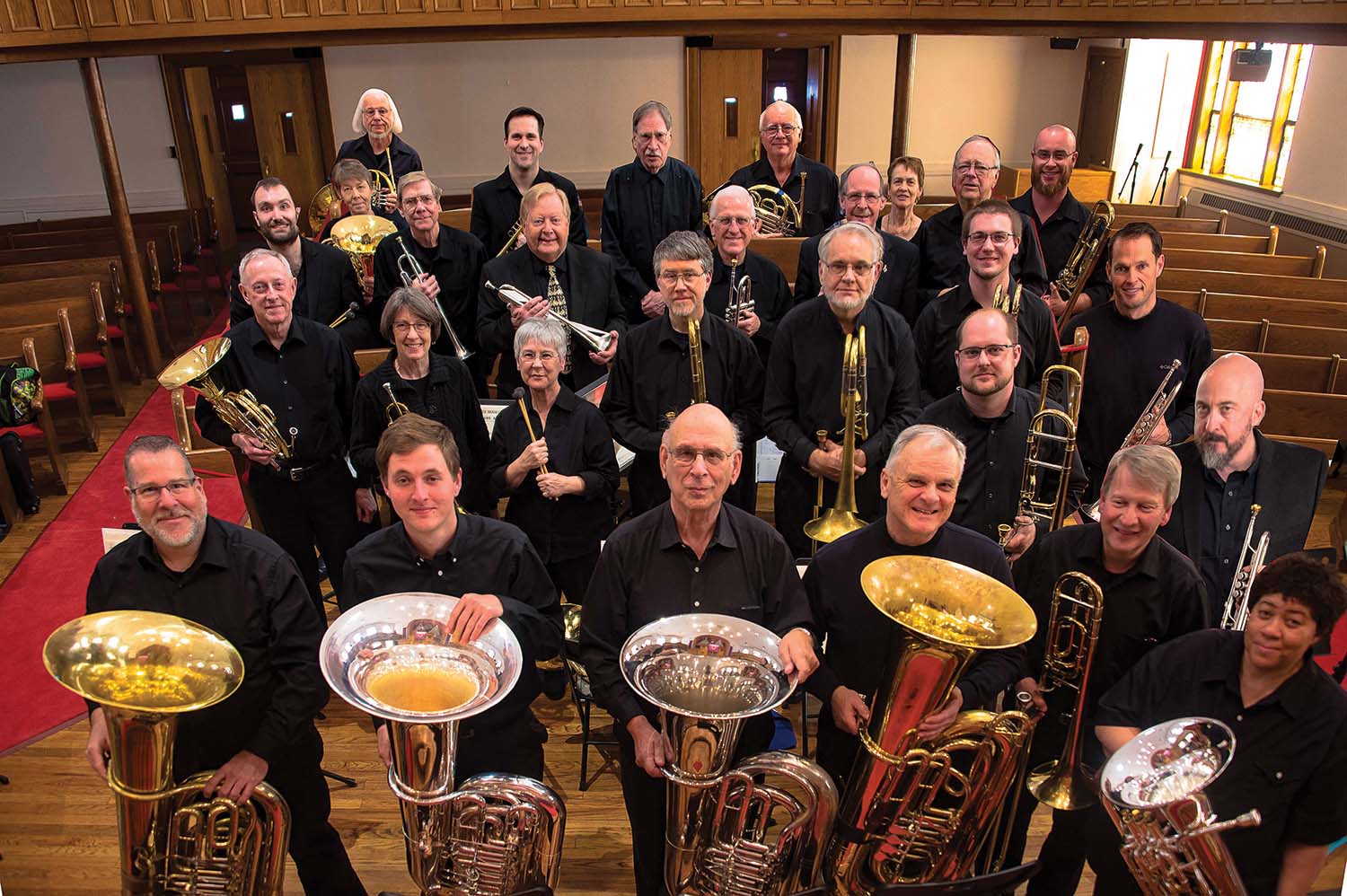
Maestro Jamie Hafner (center) knows which way the wind blows.
Bellowing out its bass notes in the marching band, the tuba looks and sounds like a challenge. It’s big, so it must be heavy, and the players’ cheeks puff out hard, seeming to signal extra lung capacity.
But none of that’s true, says Jamie Hafner, tuba player and volunteer conductor for Blue Ridge Symphonic Brass.
“Let’s get over your misconceptions about the tuba,” he says. “It’s a musical instrument, it has a beautiful sound in the hands of a musician, [and] it can play as beautifully as anything else.”
Although tubas are most often seen and heard in ensembles, such as marching bands, polka bands, and orchestras, they do often get featured solos, including in such classical works as “Fountains of Rome,” “An American in Paris,” “Ride of the Valkyries,” and “The Rite of Spring.”
Weighing in “naked” (without a travel case or bag) at between 25 and 35 pounds, the tuba was developed in about 1835 by the German conductor, composer, and inventor Wilhelm Friedrich Wieprecht. For this contribution to music, he was honored by the Royal Academy of Berlin, whose notable members include Voltaire and Einstein. The tuba has a long history and has undergone various technical developments. Today, they usually come in one of four keys, with BB-flat being the largest and the lowest. They can cost anywhere from $95 to $28,000 and are available in various sizes and pitches for different ensembles and repertoires.
“If it’s ‘Pines of Rome,’ a big holler is required,” Hafner says. “If it’s a Berlioz overture, an F tuba [the smallest and highest-pitched tuba] is required.”
Hafner has three tubas: a large Hirsbrunner CC (1974), a medium Sander CC tuba (1901), and a small Scherzer F tuba. Transporting his instruments from gig to gig is not the burden one might expect. “My medium tuba in a soft-gig bag can travel in my MGB,” he says, referring to his 1973 British two-door roadster — not exactly a family sedan. “My big Hirsbrunner fills the back seat of my Nissan Maxima,” he goes on. “[But] if I require two tubas for a given task, I use the back seat and the boot. Tubists do not require large cars. Double bassists and harpists have more of an issue. Percussionists perhaps have the biggest problem.”
Though traditionally thought of as the instrument of choice for big men, tubists are all shapes, sizes, and genders, and aren’t necessarily gifted with great lung capacity. Tubists must work on developing their pulmonary function, he explains. “It’s not the capacity, but the efficiency.”
However, that doesn’t mean that Hafner — the former Director of Bands at Brevard College and Director Emeritus of Education at Brevard Music Center, as well as Director Emeritus of Bands at the University of Toledo — doesn’t know how to dream big. The maestro’s ideal automobile for instrument transport? He describes a “hybrid, all-wheel drive that gets 50 MPG, can carry two tubas, a bevy of percussion instruments, seven college students, and a case of beer.”
Maestro Jamie Hafner leads Blue Ridge Symphonic Brass in a free concert — including a signature antiphonal selection by Giovanni Gabrieli — on Sunday, November 19, at 3pm at Trinity Presbyterian Church (900 Blythe St. in Hendersonville), opening the ensemble’s 2017-18 winter season. Donations accepted. For more information, see blueridgesymphonicbrass.org.
